Bodybuilding
7 Best Back Exercises at the Gym
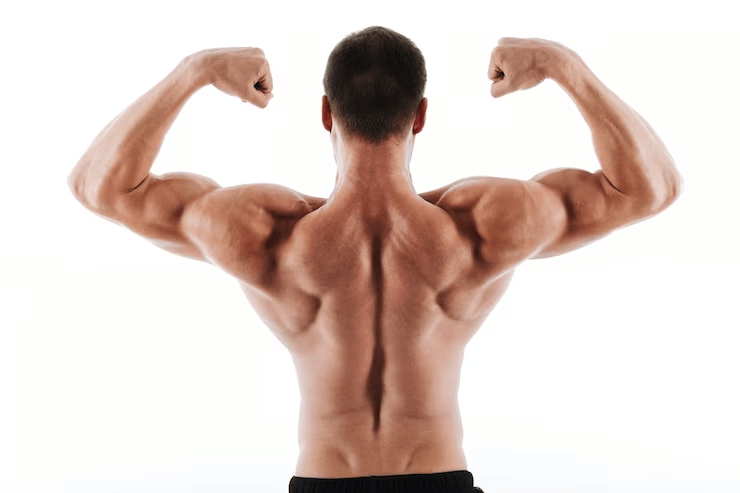
In the realm of fitness, achieving a well-rounded and robust physique goes beyond sculpting those biceps or chiseling those abs.
A strong, defined back not only enhances your posture but also forms the backbone of overall strength and functionality.
If you’re looking to amplify your gym routine and target one of the most vital muscle groups, you’ve landed on the right page. Here is our comprehensive guide on the “Must-Do Back Exercises at the Gym.”
In the hustle and bustle of the gym, where the clinking of weights and the rhythm of cardio machines dominate the atmosphere, dedicating time to your back workout gym, might sometimes take a backseat. However, neglecting your back can lead to imbalances, poor posture, and even a higher risk of injury.
In this blog, we’ll delve into the best back workout at gym that not only stimulates muscle growth but also contributes to a well-functioning, resilient back.
Understanding the Importance of back exercises gym
Before we dive into the nitty-gritty of the best back exercises at the gym, let’s take a moment to understand why dedicating time to your back workout is a game-changer. Your back is not just a canvas for an aesthetically pleasing physique; it’s a complex network of muscles that play a pivotal role in daily movements, posture, and overall strength.
Muscle Symmetry
Achieving a well-balanced physique requires attention to every muscle group, and the back is no exception. Neglecting your back can lead to muscle imbalances, affecting your overall symmetry and potentially causing discomfort or injury (1).
Posture Perfection
The muscles in your back play a crucial role in supporting your spine and maintaining proper posture. Strengthening these muscles can help counteract the effects of prolonged sitting and slouching, promoting a more upright and confident stance (2).
Functional Strength
A strong back is the backbone of functional strength. Whether you’re lifting heavy objects, participating in sports, or engaging in everyday activities, a well-trained back enhances your ability to perform these tasks with ease and efficiency.
Now that we’ve established the significance of incorporating back workouts into your fitness routine, let’s delve into the best back exercises that will set you on the path to a stronger, more sculpted back (3).
Top 7 Must-Try Back Exercises at the Gym
Are you ready to transform your back and unleash its full potential? These back exercises at the gym are tailored to target different areas of your back, ensuring a comprehensive and effective workout that will leave you feeling stronger and more confident.
1. Deadlifts
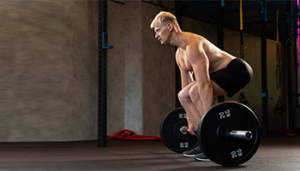
Why Do It
Deadlifts are a compound movement that engages various muscle groups simultaneously, making them a fundamental exercise for overall strength and muscle development. This exercise targets the posterior chain, including the lower back, glutes, and hamstrings.
Equipment Needed
Perform deadlifts with a barbell and weight plates. Ensure that the bar is set at an appropriate height and the weights are secured.
How to Do It
Stand with your feet hip-width apart, toes pointing forward. Grip the barbell with hands slightly wider than shoulder-width apart. Maintain a neutral spine, engage your core, and lift the bar by extending your hips and knees simultaneously. Keep the bar close to your body throughout the movement.
Any Modifications
If you’re new to deadlifts, start with lighter weights to master the correct form. Consider using a hex bar or kettlebells for variations that may be gentler on the lower back.
Coach Recommendations
Focus on maintaining a flat back, and avoid rounding or arching. Initiate the movement from your hips, and ensure a smooth, controlled descent.
Benefits of Doing
Deadlifts not only build strength in the lower back but also contribute to overall muscle development and functional fitness. They are particularly effective for enhancing posture and core stability.
Sets and Reps
Perform 3-4 sets of 8-12 reps, adjusting the weight as needed to maintain proper form.
2. Pull-Ups
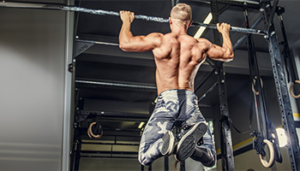
Why Do It:
Pull-ups are a bodyweight exercise that primarily targets the upper back, specifically the latissimus dorsi, while also engaging the biceps and forearms.
Equipment Needed:
A sturdy pull-up bar, either installed in a doorway or as part of a gym setup.
How to Do It:
Hang from the bar with an overhand grip, hands slightly wider than shoulder-width apart. Pull your body upward until your chin clears the bar, then lower yourself back down with control.
Any Modifications:
For those unable to perform unassisted pull-ups, use an assisted pull-up machine or resistance bands to reduce resistance. Alternatively, focus on negative pull-ups to build strength gradually.
Coach Recommendations:
Control the entire range of motion, avoid excessive swinging, and focus on engaging the back muscles. Gradually increase the difficulty as you build strength.
Benefits of Doing:
Pull-ups are effective for building upper back width and strength, enhancing posture, and improving grip strength.
Sets and Reps:
Include 3 sets of 8-12 reps in your workout routine.
3. Bent Over Rows

Why Do It:
Bent over rows target the middle and upper back muscles, including the rhomboids and traps, while also engaging the biceps.
Equipment Needed:
Perform bent-over rows with a barbell or dumbbells. Ensure proper weight selection based on your fitness level.
How to Do It:
Hinge at the hips, keeping your back flat, and grip the barbell or dumbbells with hands slightly wider than shoulder-width apart. Pull the weight towards your chest, squeezing your shoulder blades together, then lower the weight back down with control.
Any Modifications:
If using a barbell feels uncomfortable, try performing the exercise with dumbbells to allow for a more natural range of motion.
Coach Recommendations:
Engage your core to stabilize your spine and focus on a smooth, controlled movement. Avoid using momentum to lift the weight.
Benefits of Doing:
Bent over rows contribute to overall back thickness and can help improve posture by strengthening the muscles that support the spine.
Sets and Reps:
Incorporate 3 sets of 10-15 reps into your workout routine, adjusting the weight as needed.
4. Lat Pulldowns
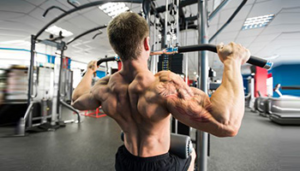
Why Do It:
Lat pulldowns isolate the latissimus dorsi muscles, contributing to the development of a V-shaped back.
Equipment Needed:
Use a lat pulldown machine with an adjustable cable and a wide grip bar attachment.
How to Do It:
Sit comfortably with your thighs secured under the pads, grip the bar with hands wider than shoulder-width apart, and pull it down in front of you towards your chest. Control the ascent as the bar returns to the starting position.
Any Modifications:
Adjust the weight according to your strength level. If you don’t have access to a lat pulldown machine, resistance bands or cable machines can be alternative options.
Coach Recommendations:
Ensure a full range of motion by fully extending your arms at the top and allowing your shoulders to elevate slightly at the bottom of the movement.
Benefits of Doing:
Lat pulldowns emphasize the width of the upper back, contributing to a well-defined and sculpted appearance.
Sets and Reps:
Include 3 sets of 12-15 reps in your workout routine, focusing on controlled movements.
5. T-Bar Rows
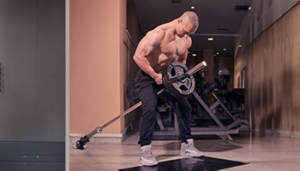
Why Do It:
T-Bar Rows are effective for targeting the middle and upper back, emphasizing the rhomboids, traps, and rear delts.
Equipment Needed:
Use a T-Bar row machine or landmine attachment with a barbell.
How to Do It:
Straddle the T-Bar machine, grip the handles, and pull the weight towards your chest. Maintain a stable stance with a slight bend in your knees and hinge at the hips.
Any Modifications:
If a T-Bar row machine is unavailable, perform the exercise with a barbell and landmine attachment or in a corner with a barbell.
Coach Recommendations:
Focus on keeping your back straight, chest up, and squeezing your shoulder blades together at the top of the movement.
Benefits of Doing:
T-Bar Rows contribute to overall back thickness and help develop a well-rounded, muscular back.
Sets and Reps:
Include 3 sets of 10-12 reps in your workout routine, adjusting the weight as needed.
6. Face Pulls
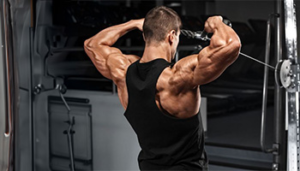
Why Do It:
Face Pulls target the rear deltoids, upper traps, and the muscles of the upper back, promoting shoulder health and improving posture.
Equipment Needed:
Use a cable machine with a rope attachment at face level.
How to Do It:
Set the cable at face level, grip the rope handles, and pull towards your face, focusing on squeezing the muscles between your shoulder blades.
Any Modifications:
Adjust the weight and experiment with different hand positions to target various areas of the upper back.
Coach Recommendations:
Control the movement and avoid using excessive momentum. Focus on a slow and deliberate pull.
Benefits of Doing:
Face Pulls are crucial for balanced shoulder development and contribute to overall upper back aesthetics.
Sets and Reps:
Include 3 sets of 12-15 reps in your workout routine, focusing on controlled contractions.
7. Single-Arm Dumbbell Rows
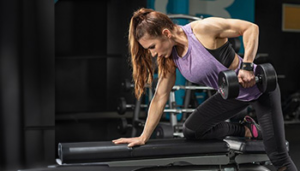
Why Do It:
Single-Arm Dumbbell Rows target the lats, rhomboids, and traps while also engaging the core for stability.
Equipment Needed:
Use a flat bench and a dumbbell for this exercise.
How to Do It:
Place one knee and hand on the bench, with the opposite foot on the ground. Hold a dumbbell in the free hand, and row the weight towards your hip.
Any Modifications:
Adjust the bench height and weight according to your strength level.
Coach Recommendations:
Focus on a full range of motion, pulling the weight towards your hip and squeezing your shoulder blade at the top of the movement.
Benefits of Doing:
Single-Arm Dumbbell Rows help address muscle imbalances and enhance unilateral strength.
Sets and Reps:
Include 3 sets of 10-12 reps on each arm, maintaining proper form throughout.
Conclusion
Incorporating a variety of these back exercises into your routine ensures a comprehensive approach to building muscle and strength. Consistency is key, and as you progress, consider periodically adjusting the intensity and incorporating progressive overload to continue challenging your back muscles.
Remember to prioritize rest and recovery, getting adequate sleep, and maintaining a balanced diet to support your fitness goals. Always consult with a fitness professional or healthcare provider if you have any concerns or pre-existing conditions. Tailor your workout routine to your individual needs, and enjoy the journey to a stronger, more sculpted back.
FAQs
1. What is a good workout for getting back to the gym?
For an effective return to the gym, focus on a balanced routine that combines cardiovascular and strength training. Aim for at least 150 minutes of moderate-intensity aerobic activity weekly, complemented by two or more days of targeted resistance training.
Include dynamic stretches before workouts and static stretches afterward for flexibility. Gradually increase exercise intensity for ongoing adaptation, and prioritize 48 hours of rest between strength sessions.
Maintain a balanced diet with ample protein and stay hydrated. Consult a fitness professional or healthcare provider for a personalized plan based on your needs and health.
2. Which workout is best with back workout?
A well-rounded workout routine typically includes a mix of strength training, cardiovascular exercises, and flexibility training. Combining a back workout with complementary exercises for other muscle groups promotes overall fitness, muscle balance, and enhances overall health and functionality.
3. What is the number 1 back exercise?
Deadlifts are often considered the number one back exercise. They engage multiple muscle groups, including the lower and upper back, promoting overall strength and muscle development. However, the effectiveness of an exercise can vary based on individual goals and fitness levels.
4. How do I train my back at the gym?
Train your back at the gym with a mix of compound exercises like deadlifts and pull-ups, complemented by isolation movements like rows and lat pulldowns. Aim for 3-4 sets of 8-15 reps per exercise, focusing on proper form and gradual progression.
5. Is 3 back exercises enough?
While three back exercises can be effective, a well-rounded routine typically includes a variety of movements to target different muscle groups. Consider incorporating a mix of compound and isolation exercises for a more comprehensive back workout and better overall development.


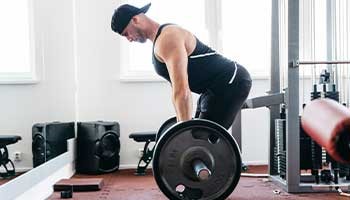

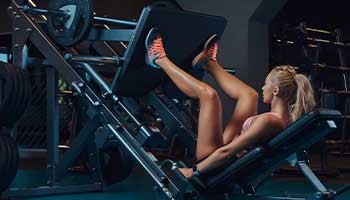
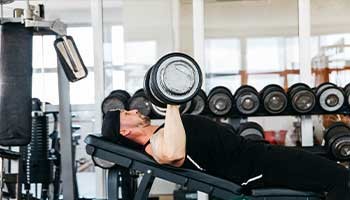
Lots of awesome ideas and instructions. Good job. I’m going to give it a whirl. Thank you
isolation exercises allow you to target specific muscles, ensuring a well-rounded back workout.
https://www.siitus.com/2024/08/22/the-ultimate-guide-to-an-effective-back-workout-for-strength-and-posture/